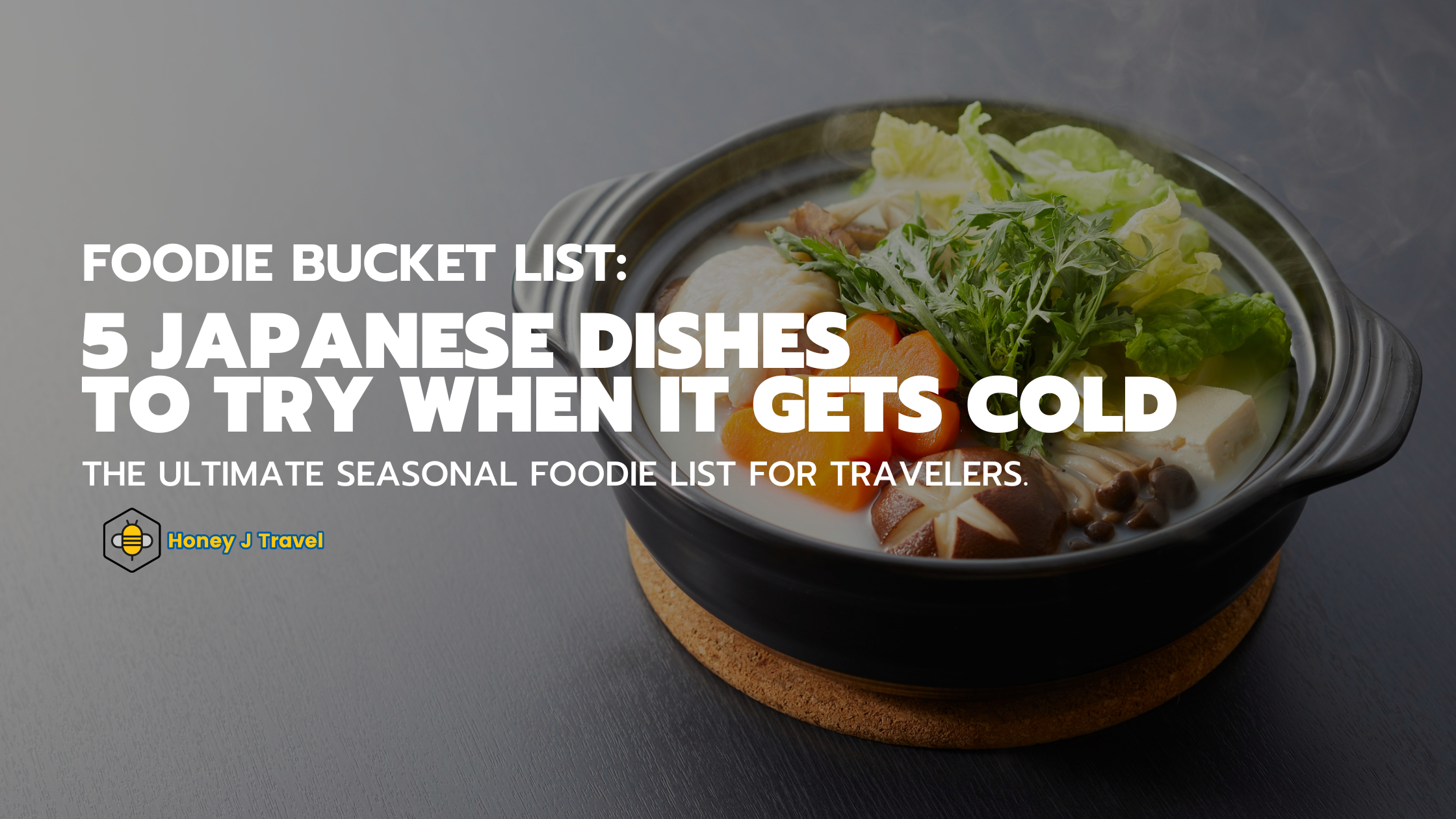
Akari Terada
Writer
When autumn leaves start to fall and winter snow blankets Japan, the dining tables across the country transform with heartwarming seasonal foods. For travelers, this is one of the best times to visit Japan—not just for the scenery, but also for the flavors. From sweet fruits to comforting hotpots, here are the Top 5 must-try seasonal foods in Japan during autumn and winter.
Table of Contents
Persimmon (Kaki) – The Jewel of Autumn
- Why it’s famous:
Persimmons are a true symbol of Japanese autumn. Their natural sweetness intensifies as the weather cools, making them a favorite seasonal fruit. - Where to try:
Nara and Wakayama prefectures are especially famous for high-quality persimmons. You’ll often see them hanging outside houses, being dried into hoshigaki (dried persimmons). - Traveler’s experience:
Enjoy persimmons fresh, or try hoshigaki, which are chewy, sweet, and almost candy-like. Some tea houses serve them alongside green tea for a perfectly seasonal snack. - Fun fact:
In Japan, persimmons are believed to help fight colds thanks to their high vitamin C content—making them a healthy autumn treat.

Snow Crab – The Taste of Winter Seas
- Why it’s famous:
Winter marks the start of snow crab season, and Japanese locals eagerly await this time of year. The meat is tender, sweet, and considered a winter delicacy. - Where to try:
Fukui Prefecture, along the Sea of Japan coast, is renowned for its premium Echizen crab. Kanazawa in Ishikawa Prefecture is also a hotspot for crab lovers. - Traveler’s experience:
Crab is often served as sashimi, grilled, in hot pot, or even as sushi. Local markets and seaside ryokans offer full crab feasts during the season. - Fun fact:
The first day of snow crab season in Japan is so important that it’s often covered on the national news!
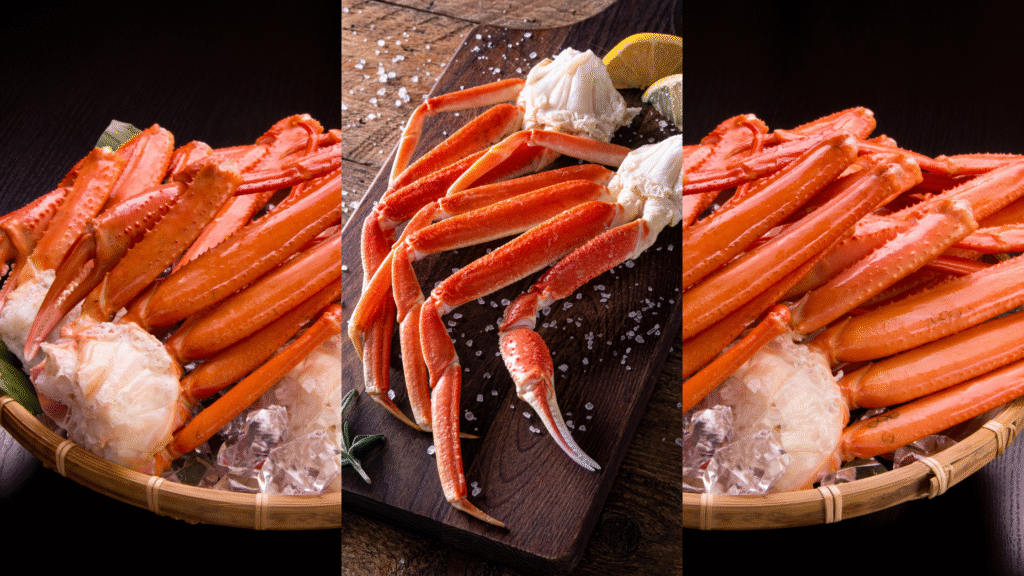
Oden – The Cozy Winter Street Food
- Why it’s famous:
Oden is a comforting Japanese hot pot dish with ingredients like daikon radish, eggs, konnyaku, and fish cakes simmered in a soy-flavored broth. It’s the ultimate warming food during chilly nights. - Where to try:
Oden stalls (odenya) are found all over Japan in winter, but Shizuoka Prefecture is famous for its own style with darker broth and ground fish powder toppings. - Traveler’s experience:
The most convenient way to try oden is at Japanese convenience stores (konbini) like 7-Eleven or Lawson, where you can grab a cup after a long day of sightseeing—perfect before heading back to your hotel. - Fun fact:
Each region has its own unique oden style, making it fun for travelers to compare flavors across Japan.
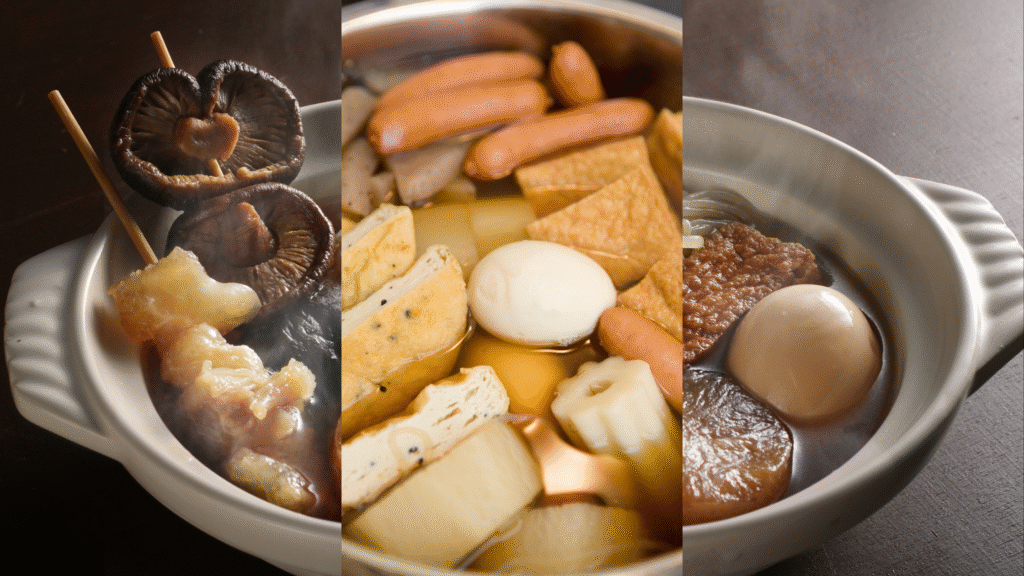
Yakiimo (Roasted Sweet Potato) – The Street Food Favorite
- Why it’s famous:
Few things say Japanese autumn and winter like yakiimo. Sweet potatoes are roasted slowly until the inside becomes golden, soft, and naturally sweet. - Where to try:
Ibaraki Prefecture is one of Japan’s top sweet potato producers. In cities, you’ll often hear the nostalgic call of yakiimo trucks announcing fresh roasted potatoes. - Traveler’s experience:
Buy one from a food truck, street vendor, or even convenience stores. Holding a hot yakiimo in your hands while strolling through a chilly evening is a uniquely Japanese winter memory. - Fun fact:
Some vending machines in Japan now sell hot yakiimo, making it one of the most convenient seasonal snacks!

Nabe (Hot Pot) – The Social Winter Meal
- Why it’s famous:
Nabe is not just food—it’s an experience. Families and friends gather around a simmering hot pot filled with vegetables, tofu, and meats. It’s hearty, warm, and meant to be shared. - Where to try:
Fukuoka is known for motsunabe (beef or pork offal hot pot), while Hokkaido is famous for ishikari nabe, a salmon and miso-based version. - Traveler’s experience:
Many izakayas and specialty restaurants offer various nabe styles. It’s a great way for travelers to connect with locals, since nabe is usually eaten in groups. - Fun fact:
In winter, supermarkets sell ready-made nabe soup bases, so even if you’re staying in an Airbnb, you can easily cook your own Japanese hot pot.
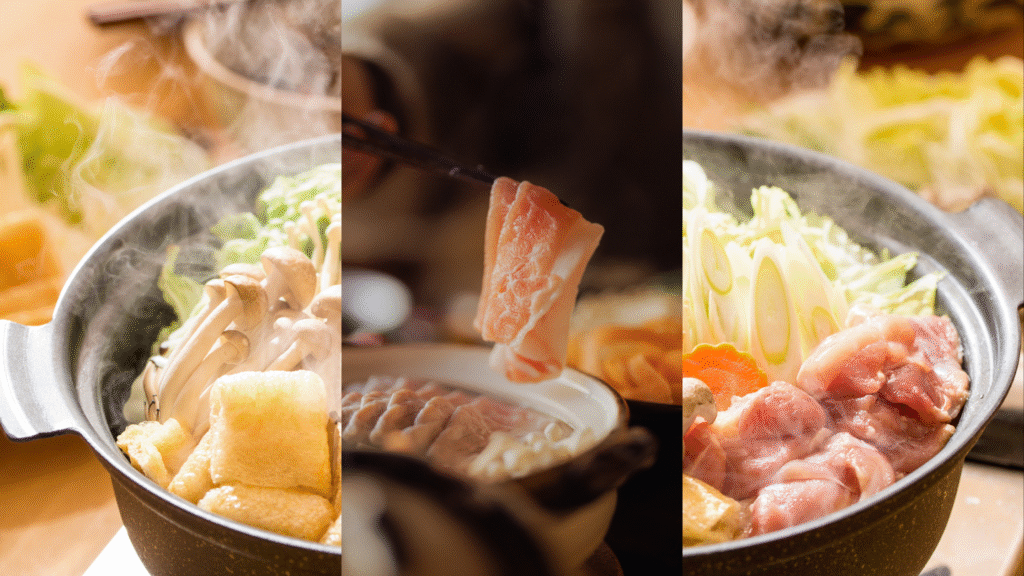
Want to try authentic Japanese hot pot with locals?
Join our Home Visit and Mochi Pounding Experience in Shiga, where you’ll share a homemade sukiyaki nabe with a welcoming local family. It’s the perfect way to warm up, enjoy Japan’s winter cuisine, and create unforgettable memories beyond sightseeing.
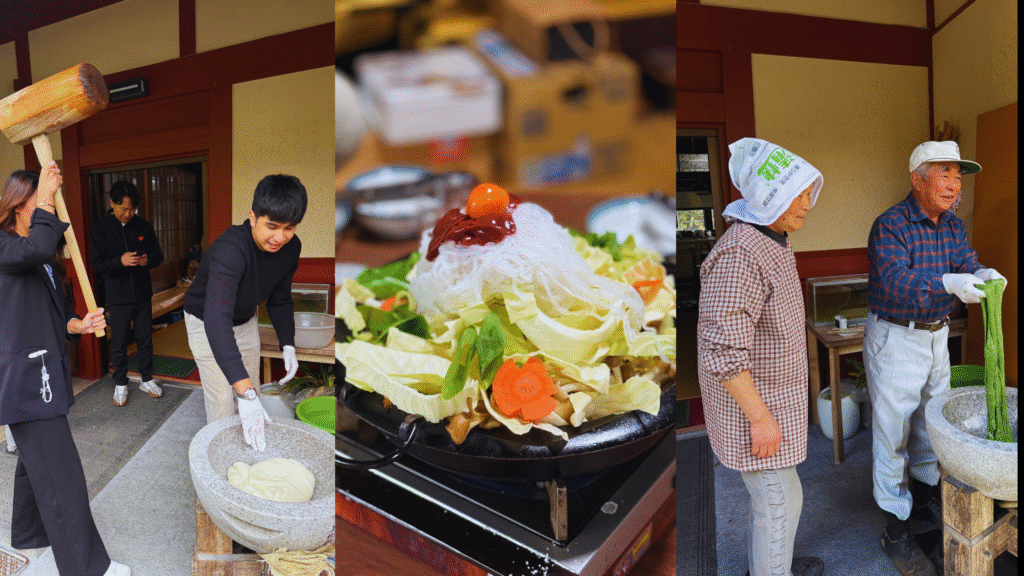
Final Thoughts—Travel That Feels Like You
Traveling in Japan during autumn and winter is a feast for the senses. These seasonal foods not only warm your body but also connect you to the local culture and traditions. From street snacks like yakiimo to luxurious snow crab feasts, your journey through Japan will taste just as unforgettable as it looks.
Share this blog
scenic japan blogs

Live your adventure
+81 3-6824-2055
info@honeyj.co.jp
Head Office
Morimatsu Building 2F
3 Nyorai, Kita, Nagoya
Tokyo Office
Nissey Marunouchi Garden Tower 3F
1-1-3 Marunouchi, Chiyoda-ku, Tokyo

Government-Licensed Class 1 Travel Agency License No. 2149 JATA Regular Member


